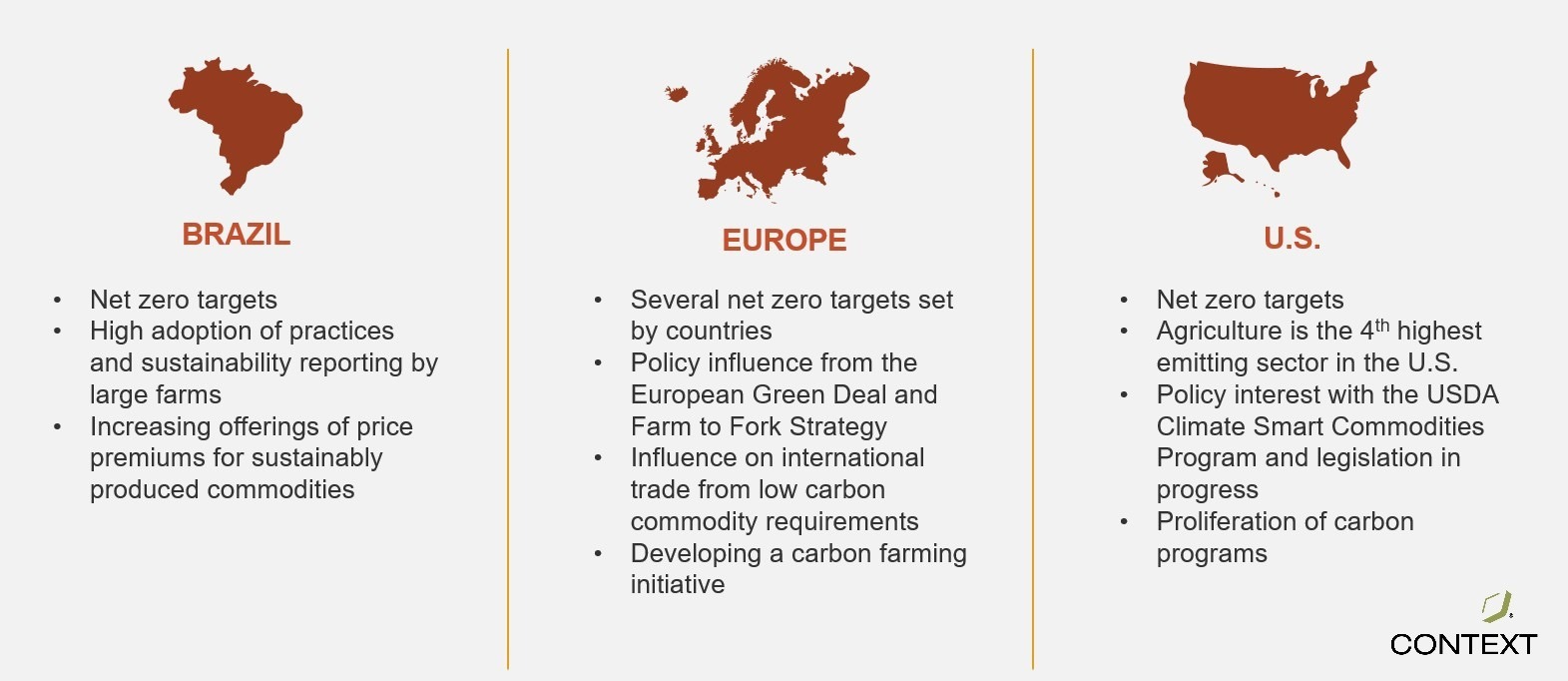Which Countries Are Using Agricultural Carbon Markets?
Content has been adapted from The Context Network “Get Smart, Stay Smart” Ag Carbon Service.
The short answer: Brazil, European countries, and the United States are among those focusing on agriculture’s role in reducing greenhouse gas emissions and sequestering carbon.
- Other early adopters include Canada and Australia. Their markets focus primarily on greenhouse gas emissions across sectors and less on agricultural carbon credits (though agricultural credits still play a part in generating offsets).
- The number of markets is quickly growing, and not all markets are the same. Some are regulatory—like the European Union Emission Trading System (EU ETS). Others are voluntary, like the majority of programs and markets appearing in the United States.
- You can read more about the difference between voluntary and regulatory (or compliance) markets here.
Back it up: Agricultural carbon markets are an offshoot of the “net zero targets” set at the national level. That is, the push to decrease emissions—or “offset” the emissions a country, industry, or organization cannot decrease—has spurred development of both regulation-driven and voluntary carbon markets.
- Policy at the national level sets the stage for what a market developed within or between these countries will look like.
- For example, Brazil’s carbon credit program is part of a regulated government initiative to establish greenhouse gas emission reductions. The Brazilian government is creating a long-term climate neutrality program that will record emissions, removals, reductions, and offsets of greenhouse gases.
- In the United States, the United State Department of Agriculture (USDA) is set to invest more than $3.1 billion in 141 projects through a new program called “Partnerships for Climate-Smart Commodities.” This spend is set to support land managers in adopting climate solutions that:
- “Increase resilience,
- Expand market opportunities, and
- Strengthen rural America.”
- The funding opportunity closed in the summer of 2022, but this first stab at spending to support agricultural climate markets and increase the resiliency of American agriculture will likely influence the course of markets and carbon trading in the U.S.
In the meantime, voluntary carbon markets are still in discovery phases, with pilot program participants receiving some of their first payments for adopting practices. But there’s a lot we can learn from program outcomes and case studies in other countries.
Photo by Edwin Remsberg and courtesy of USDA-SARE.









